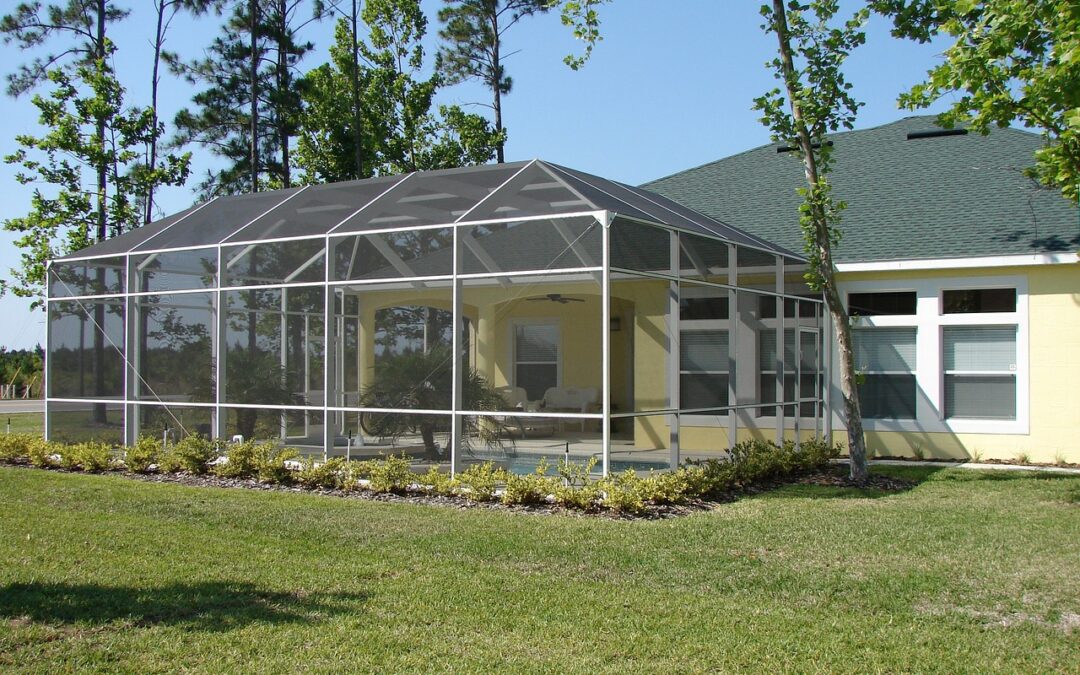With the rising cost of energy, utility bills for residential homes are through the roof and are only expected to rise even more in coming years. As a result, many homeowners are now actively seeking ways to make their homes as energy-efficient as possible, whether that be through the installation of expensive solar panels or the installation of new replacement doors and replacement windows to help improve residential heating and cooling energy use.
Things like caulking and weatherstripping all the gaps in the door and window frames, installing window coverings and door sweeps, adding exterior shading or a sunroom, and opting for glazing-type windows are some of the most common and simplistic ways to make your home more energy-efficient with windows and doors.
Energy-efficient window and door types can help significantly reduce utility bills while also being beneficial for the environment. To learn more about how to make your home even more energy-efficient with the right type of windows and doors, read on!
7 Ideas For More Energy-Efficient Doors & Windows
Approximately 30% of a home’s heating and cooling energy is lost through windows and doors. Also, with most homes having standard single or double-pane windows, 76% of the sunlight that passes through these windows, transforms into heat.
The faster your home loses or gains heat the more energy is required to maintain the desired temperature level.
Luckily, there are many practical and fairly inexpensive ways you can make your existing windows and doors more energy-efficient, especially, if they are still in fairly decent condition.
-
Caulk & Weatherstrip All Doors & Windows
Check your windows and doors for signs of gaps, leaks, or openings that are causing air to escape. If your doors and windows are in good shape the air that is escaping is likely from areas around the frame.
When it comes to doors, first look at the hinges and make sure they aren’t loose or giving way. Next, check for any gaps in your door frame. If you see any small gaps fill them up using silicone caulk that is readily available in any hardware store.
Weatherstripping your door and windows is also a great idea to help improve energy efficiency. Compressible foam and rubber are the perfect insulation materials to help seal all gaps when a door or window is closed. Door sweeps can also greatly help reduce the amount of heat or cooling loss and is another highly effective and inexpensive way to improve your home’s energy efficiency.
You can learn how to caulk or weatherstrip by checking out Youtube videos. However, if you don’t have the time or would rather a professional handle it, look for a home window replacement company near you that offers caulking and weatherstripping services.
-
Be Mindful Of Glass Type
The type of glass you have on your windows and doors can also make a big difference in terms of how much heating or cooling you are losing.
When it comes to residential homes, there are three common types of glass used in windows and doors, which include single-pane, double-pane, and triple-pane.
Single-pane windows are the least energy efficient but also the most inexpensive glass type by a long shot.
Double-pane windows have two panes of glass instead of one. Between the two panes lies a sealed compartment that contains insulated gas, such as argon, which helps reduce heat and UV rays entering your home.
Triple-pane windows have three panes of glass and are the most energy-efficient glass type, but also by far the most expensive.
-
Choose The Right Type Of Window & Door Frame Material
It is not only glass that affects your door and windows’ overall energy efficiency. Factors such as what type of frame material that glass is placed on can also impact efficiency. More often than not, it isn’t the door that is causing heat to escape, but rather the areas around the door, such as the door frame, that are the real culprit.
There are several types of frame materials. Frames made from aluminum are the cheapest option for homeowners but also the least energy efficient. Wood frames aren’t great for insulation either, but many prefer wooden frames over aluminum for their aesthetic appeal and longevity. They also go well with wooden doors.
However, vinyl, composite, and fiberglass are by far the best materials for window frames as they offer superior insulation and in turn better energy efficiency. Vinyl is the cheapest option among the three, whereas fiberglass is the most expensive.
-
Get Your Existing Windows Coated & Treated
Low-emissivity coatings (Low-E-Coatings) and window tinting are amongst the most inexpensive ways of making your existing windows more energy efficient.
Low-E-Coatings help minimize the impact of harmful UV rays entering your home and also lower the rate of energy loss of the glass.
Window tintings are highly effective at reducing the amount of sunlight entering into your home and are a must-have if you live in a place with plenty of sunshine.
-
Consider Installing Storm Doors & Hurricane Shutters For Added Protection & Insulation
Storm windows and doors are not only far more durable than normal doors and windows but also offer much better insulation and protection against natural elements.
If you live in areas where the climate can get extremely cold, or in places where hurricanes and storms are a regular occurrence, installing storm doors and windows is highly recommended.
Homes that have doors with glass panels or have plenty of exterior windows can also greatly benefit from adding Bahama shutters or hurricane shutters to protect all that expensive glass.
-
Replace Old Windows With Energy Efficient Window Options
You can also always choose to replace old windows and doors with new energy-efficient window options, such as triple pane windows that are installed on composite, fiberglass, or vinyl window frames for much-improved energy efficiency.
New replacement windows and doors can be expensive but in the long run, can help you save a lot more money than cheaper less efficient options.
-
Use Curtains, Awnings, Blinds, & Overhangs
If you live in areas with hot sunny summers one of the best ways to improve energy efficiency would be to reduce the amount of direct sunlight and heat entering your home. You can do this by adding both exterior and interior shading, such as using thicker and darker shade curtains and blinds or installing awnings and overhangs on the exterior of your home that receives the most direct sunlight.
If you live in areas that are generally cold, you can go the opposite route and remove any shadings to allow for the most amount of sunlight to come through. You can also add a sunroom, or make custom windows, to help make the best use of the limited sunshine.
Home Window Replacement Services In Lowcountry, SC
Whether you are looking for new windows and doors, the addition of a sunroom or glass porch enclosure, shutters, storm protection, or any other window and door-related services in South Carolina, don’t hesitate to call Muhler at 843.572.9727. We have been serving the community for over 30 years and are dedicated to providing the highest level of service and value.






